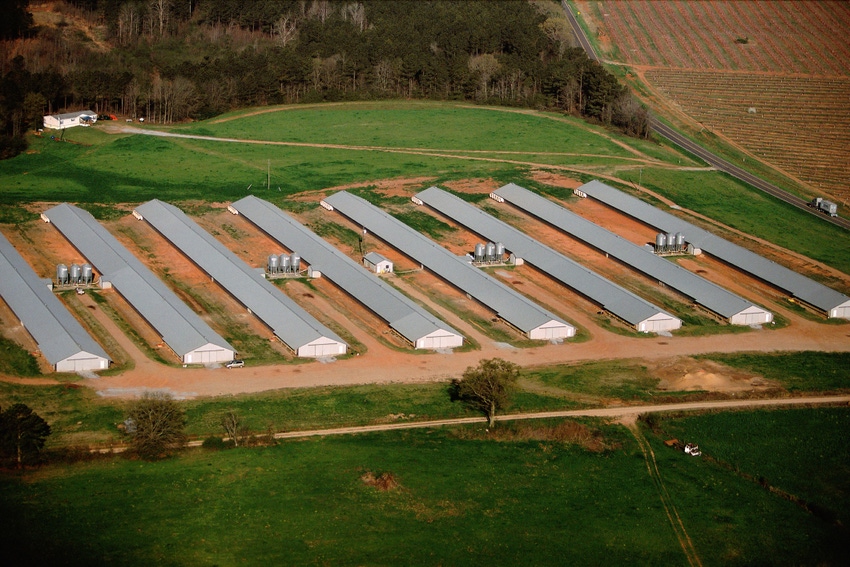High temperatures in stacks of broiler litter for storage may inhibit degradation of hormone levels.

In the broiler chicken industry, an estimated 13.2 million tons of broiler litter is generated annually, and this byproduct must be properly managed, utilized and disposed of, researchers from the University of Georgia wrote in a recent issue of the journal Poultry Science.
While land application of broiler litter provides plant nutrients, it also has potential as an environmental contaminant because it contains the naturally excreted sex hormones testosterone, estrone and 17 beta-estradiol, according to University of Georgia researchers Kate Cassity-Duffey, Miguel Cabrera, Mussie Habteselassie, Sayed Hassan, John Rema and Brian Fairchild.
They noted that the concentrations of these sex hormones in broiler litter can be affected by the number of flocks, age, sex, type and housing/storage conditions that, in turn, drive hormone degradation rates, which are driven primarily by mineralization, with some dissipation.
Cassity-Duffey et al. said when broiler house cleanout does not coincide with appropriate land application times, excess litter must be stored, and stacking is the most common storage practice to manage poultry litter prior to land application.
Deep stacking is done under permanent storage structures, the researchers said, noting that stacks are recommended to be less then 2 m high to avoid fires. Under real-world conditions, stacks vary in litter composition, temperature, water content and height and, therefore, vary in potential hormone-mineralizing conditions.
Cassity-Duffey et al. conducted a study to better understand the dynamics of sex hormones in broiler litter after removal from the house and placed in stacks.
The researchers monitored stack temperatures and hormone concentrations at 15, 45, 75 and 105 cm (measured from the stack bottom) in six different on-farm stack houses for either four or eight weeks.
Significant differences in temperature were determined by height and by stack, Cassity-Duffey et al. said, noting that stack temperatures during the first four weeks ranged from 41.5°C to 54.5°C, and all stacks reached a maximum temperature by day 7. The highest temperatures were observed at the 45 cm or 75 cm height. Average stack temperatures correlated with the ambient temperature, the researchers said.
Hormone concentrations did not vary with height within each house, Cassity-Duffey et al. reported. In five of the six stack houses, the concentrations of 17 beta-estradiol and/or testosterone significantly decreased after stacking for four or eight weeks (35-64%), with only one house showing a significant decrease in estrone concentration (72% in four weeks).
The percent change of estrone and 17 beta-estradiol mineralization during the first four weeks was negatively correlated with the day 7 pile temperature, Cassity-Duffey et al. reported, noting that this indicates that the high temperatures observed during stacking may inhibit estrogen mineralization.
Cassity-Duffey et al. concluded that hormone degradation decreased with high temperatures. Therefore, they said stack management practices that favor at least a period of low temperatures may help promote mineralization of these hormones and reduce any potential for introduction into the surrounding environment.
About the Author(s)
You May Also Like



